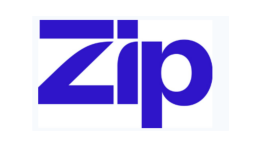“Although FinTech companies have the advantage of innovation, incumbent financial institutions still have the upper hand in terms of scale, and we have not yet reached the dipping point of digital disruption in either the U.S. or Europe,” concluded Citi GPS Managing Editor Kathleen Boyle in the introduction to Citi GPS’ “Global Perspectives and Solutions” report.
Pressure from FinTechs and heightened customer expectations mean banks are upping their focus on innovation, but as Citi’s report emphasized, the shift is slow-going.
This disconnect between traditional banks’ interest in FinTech innovation and actual implementation of digitized solutions is one of the largest challenges of blockchain technology to break into the financial services space. Gradually, some banks, like Santander, are rolling out working blockchain tools. But the launch of distributed ledger solutions by traditional banks is a minute fraction of the patent applications, proofs of concept, pilots and generalized efforts to conceptualize blockchain tools in the financial services industry.
According to Hanna Zubko, CEO of IntellectEU, banks may not be struggling with experimenting with blockchain, but they are struggling with the actual implementation of these tools.
Today (Thursday, April 19), IntellectEU announces the rollout of Catalyst, a solution to help financial services providers integrate blockchain solutions with their own back-office systems. Zubko spoke with PYMNTS about the hurdle banks face when trying to make legacy systems and infrastructure work with next-generation tools like the cloud and blockchain.
Advertisement: Scroll to Continue
“There are certain steps in adopting technology in a very regulated industry, such as financial services,” she said. “What we have observed is that we have to take a step-by-step approach.”
Today, the conversation around blockchain and banking is vast. The technology offers an opportunity for FIs to cut costs from payments processing, reconciliation and other areas of operations. At the same time, Zubko said, blockchain opens the door to new revenue streams.
But the mere cost of implementing a blockchain solution to work in harmony with existing back-office tools is an expensive one.
According to Zubko, IntellectEU worked with an insurance consortium that developed a blockchain-based solution for the industry. The cost for players to implement that tool, however, ended up being twice as much as the cost of actually procuring the tool itself.
“It really was a challenge for them to not only build a solution to optimize their business processes and create revenue streams, but then pay double for integrating it with their back-office and core insurance systems,” said Zubko, adding that Catalyst aims to address that friction associated with corporates and financial service firms’ adoption of blockchain as part of their broader digitization efforts.
Thomas Bohner, IntellectEU’s Catalyst product manager, also told PYMNTS that banks are struggling today with their digital transformations, not just because of the cost of new tools, but because of the disruption to their back-office functions.
“Global financial institutions really cause pressure to innovate, and at the same time offer efficient, secure and cost-effective services,” he said. “Distributed ledger technology gave us the opportunity to rearchitect the financial industry, and we saw further challenges remain: How do we integrate infrastructure that may not necessarily communicate with banks’ common language?”
Complicating the implementation of blockchain tools for banks is the fact that often, financial institutions don’t have a single platform through which their back-end operations run. International expansion, mergers and acquisitions and sheer length of time that some institutions have been in operation all means these players operate with a kaleidoscope of infrastructures.
“Very often, institutions accumulated 60 to 100 different systems,” said Zubko. “They go through acquisitions, which also bring complexity and diversity in their internal infrastructure environments.”
Similarly, blockchain technology is developing on multiple fronts, with multiple blockchains now offering solutions for banks to integrate, including Hyperledger and Ethereum.
Understanding which of these technologies to implement, and how to get solutions to communicate with an array of back-office functions, is a significant barrier to blockchain adoption for banks — and to digitization efforts overall.
A survey by the Boston Consulting Group (BCG) found that for banks, speed of implementation is the most frustrating part of the digitization process. According to BCG analysis, legacy IT is among the largest hurdles to implementation, as is the architecture of data that struggles to support any digital disruption.
“Banks cited existing IT systems as the No. 1 reason for failure to achieve digital transformation,” BCG said in its report released last October. “In many cases, this was a result of difficulties in enabling current systems to speak to new digital applications, as well as the faulty business logic embedded in legacy systems.”
But the pressure continues to increase for banks to digitize, not only to better service customers and to remain competitive, but to grab opportunities to bolster the bottom line.
Separate analysis by BCG released last month concluded that digitization could halt corporate banks’ shrinking profits.
“Digital is forcing sweeping changes in corporate banking, and institutions will need to adapt or see their competitiveness and market share steadily spiral down over the next few years,” warned BCG Senior Partner Dr. Carsten Baumgärtner in a statement. “Now is the time to develop a more coherent digital strategy to decide where to play and how to invest.”
According to IntellectEU’s Zubko, FIs have to take a gradual approach to blockchain adoption, but with disruption pressuring further into the industry, they cannot entirely delay the process.
“Obviously, we cannot expect the world will immediately transition to new technology,” she said. “But financial institutions will migrate to and adopt blockchain.”




